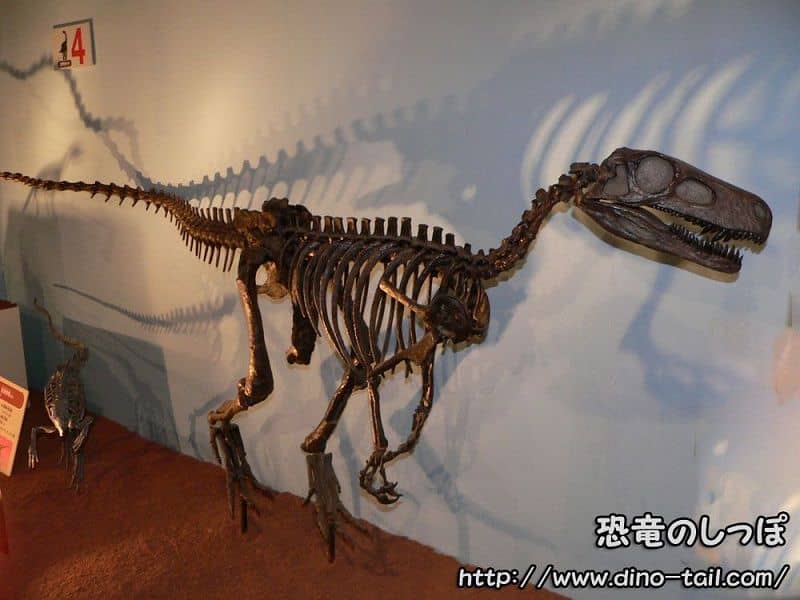About Herrerasaurus
| Scientific Name (Genus) | Herrerasaurus |
| Meaning of Name |
Herrera's lizard
Herrera [Personal Name] -saurus (lizard) [Greek] |
| Classification |
Saurischia, Theropoda (Herrerasauridae?)
Saurischia (Basal Saurischia, Herrerasauridae) |
| Total Length | Approx. 3 - 6m |
| Diet | Carnivorous |
| Period | Late Triassic (approx. 230-220 million years ago) |
| Species | Herrerasaurus ischigualastensis |
| Year of Paper Publication | 1963 |
| Genus Name Publication | Reig, O.A. (1963). La presencia de dinosaurios saurisquios en los "Estratos de Ischigualasto" (Mesotriásico Superior) de las provincias de San Juan y La Rioja (República Argentina). Ameghiniana, 3. |
Characteristics
Herrerasaurus is a primitive dinosaur that appeared in Argentina during the Late Triassic (230-220 million years ago).
It is sometimes called Herrerasaurus.
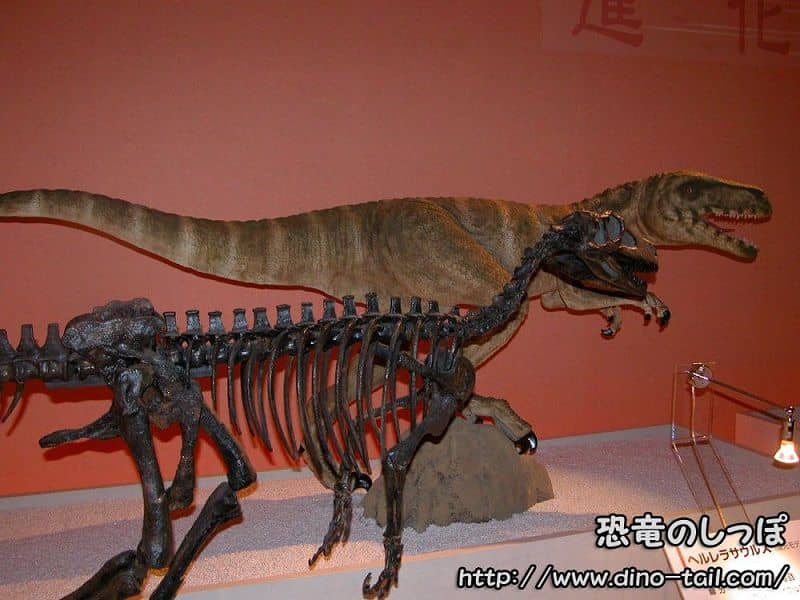
In the background is a reconstruction model.
It is estimated to have been about 3 meters long and weighed 250-300kg. It had five fingers on its forelimbs (hands) (*1). The shortness of its hind legs above the knee and the length below the knee suggest that Herrerasaurus was an agile bipedal animal.
One of the most surprising features of Herrerasaurus is that it had a joint in the middle of its lower jaw, allowing it to slide its jaw back and forth . This is thought to have enabled a "grasping" bite, allowing it to firmly hold onto prey while its teeth were embedded.
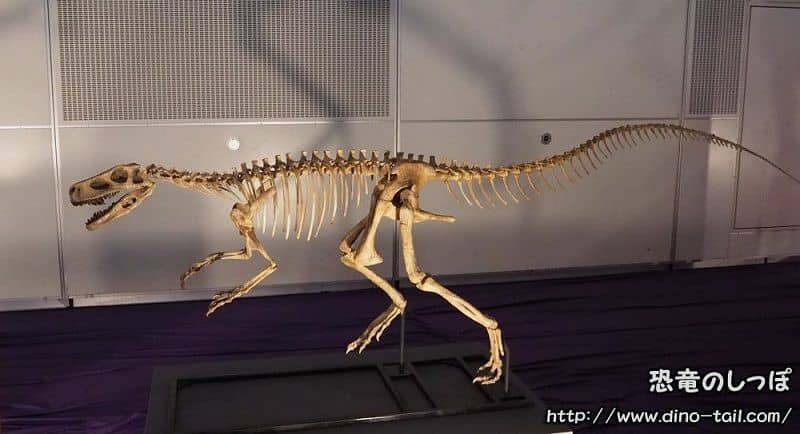
(*1) The relationship between theropod evolution and the number of forelimb fingers
Comparing just the timeline and the trend in the number of fingers, one of the earliest dinosaurs, Eoraptor, also had five fingers.
Coelophysis had four fingers, the Mid-Jurassic Ceratosaurus also had four, the Late Jurassic Allosaurus had three, and the Late Cretaceous Tyrannosaurus had two.
It seems that theropods reduced the number of their fingers as they evolved.
Discovery and Classification
In 1959, a goat herder named Victorino Herrera discovered fossils in an outcrop near the city of San Juan in the Andes Mountains of Argentina. This formation, known as the Ischigualasto Formation, is also famous for later yielding Eoraptor.
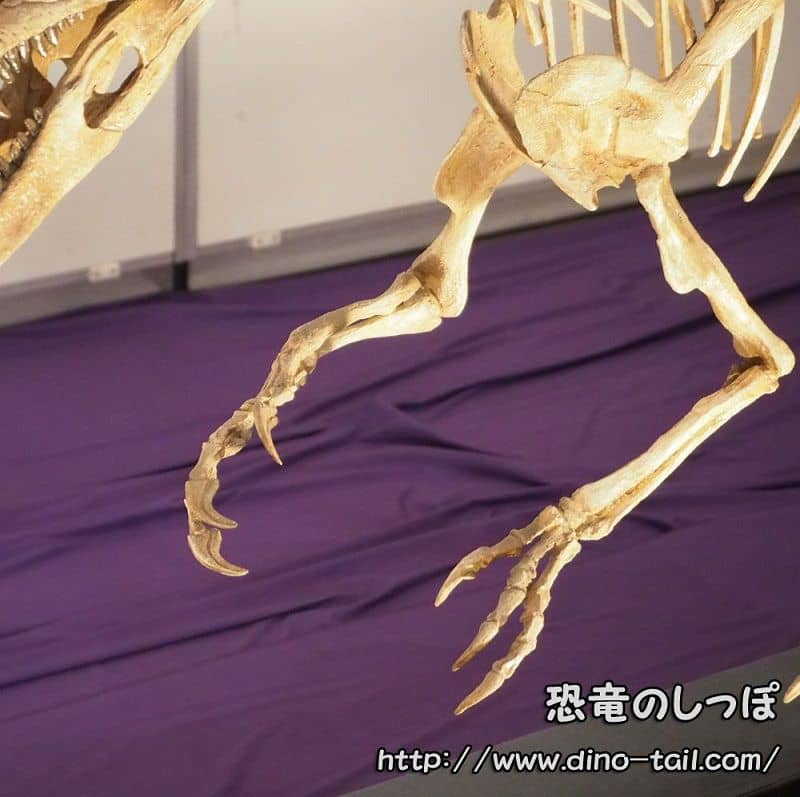
In 1963, paleontologist Osvaldo Reig described the new genus and species Herrerasaurus ischigualastensis based on this discovery. In the same paper, Reig also described another dinosaur, Ischisaurus cattoi , based on other fossils, but this was later found to be a synonym of Herrerasaurus.
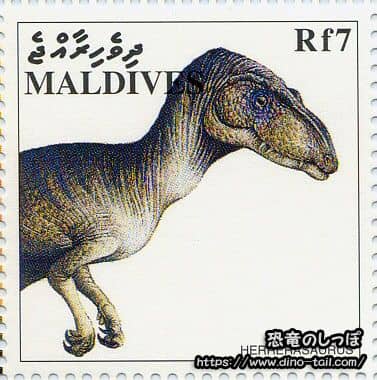
Initially, only fragmentary skeletal fossils were found, leading to various opinions on the classification of Herrerasaurus. The describer, Reig, initially thought it belonged to the infraorder Carnosauria, which includes Allosaurus.
In 1988, a nearly complete skull fossil was discovered. This discovery led to it being placed directly under the suborder Theropoda, a higher taxonomic rank than Carnosauria. Because primitive features were observed, it was considered a genus that existed before differentiation.
Furthermore, in 2017, a new dinosaur classification was proposed, creating a completely separate branch for Herrerasauridae from the suborder Theropoda.
Herrerasaurus Stamp & Fossil Gallery
